High Reach Watering Can
by Pierre Marcotulli in Workshop > 3D Printing
3397 Views, 10 Favorites, 0 Comments
High Reach Watering Can

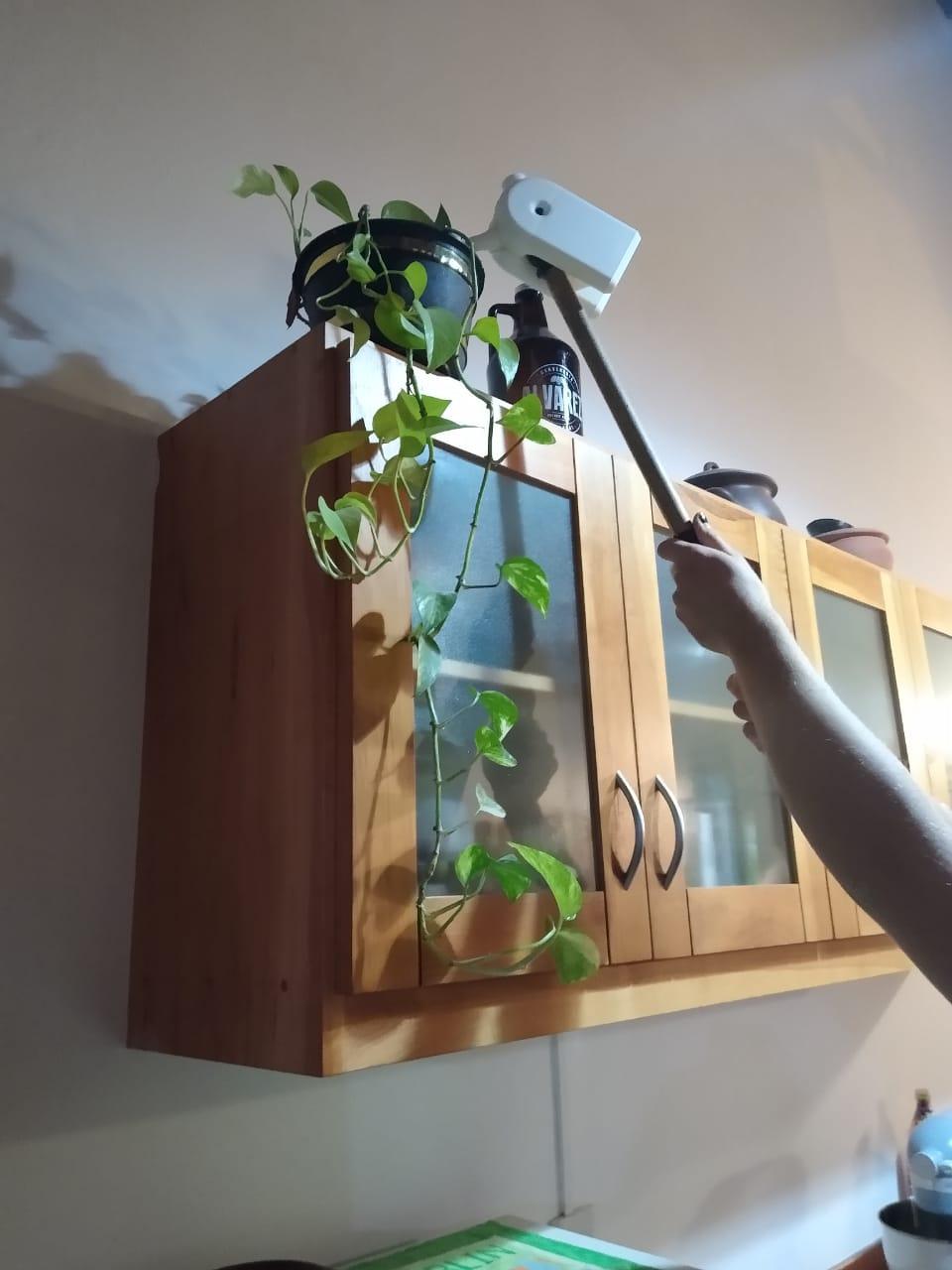
Hanging pots and wall gardens are great, but it can get a bit tricky when it comes to watering. In this instructable I am going show you how you can use 3D printing to make a high reach watering can to water your plants without using chairs or ladders!
Supplies
For this project you will need:
- A 3D printer.
- A spare broomstick.
- Some string.
Sketching the Overall Shape.

It all started with a very fuzzy idea of a pitcher pivoting at the end of a stick, but I needed to get a sense of the shape before I could even start making the CAD model, so I made some rough sketches of the Watering can until I came up with a design that I liked.
Making the Body.


I started the CAD model by making the sketch for the body. It really helped me to define the general measurements and proportions. Next, I used the extrusion tool to create the 3D shape. I made it so that the sketch remained at the centre of the solid, so that I could use the same sketch to guide other operations further on.
Adding the Filling Spout.


Once the body was done, I added the filling spout using the sweep feature. I added a fillet to make a smooth transition to the main body
Adding the Side Opening.



Using the cut extrude feature I made a side opening to allow the broomstick to come out when the pitcher is pivoting. And guess what? More fillets.
Adding the Spout.


Another sweep, a fillet and the spout is ready to pour!
Making the Center Axis.



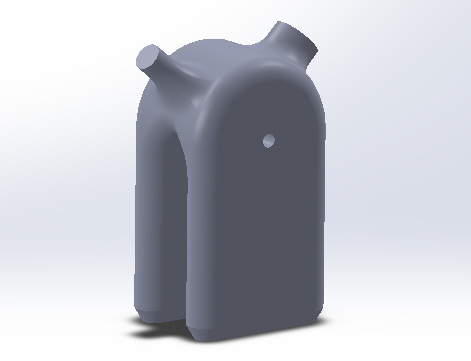
Next, I used another cut extrusion to shape the axis for the pitcher to pivot around. And of course, some more fillets.
Shelling.

This is a key step. The shell feature is great for this kind of models that need to be hollow. Instead of modelling all of the inside geometry you can just select the faces you want to use as openings (in this case the spouts) and it hollows out the piece with a uniform wall thickness. When designing pieces for 3D printing you can select a thickness that is a multiple of your nozzle diameter. I used 1,2 mm for a nice stiff shell.
Adding the Line Anchor Points.


Here I add some holes for the thread to pass through during the installation. They allow you make the pitcher pivot by pulling the string. Before making the holes I added some extra material so that the perforations are separated from the water reservoir.
Shaping the Axis.


To shape the axis I made an initial linear extrusion followed by a cilindrical cut extrusion from the bottom. The cut mimicks the space the broomstick will ocupy, so that it locks the axis in place, preventing it from coming out from the sides.
Shaping the Stick-cap.

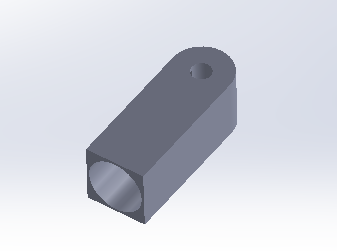


To make the stick-cap I started by extruding a simple profile wich included the side hole, then followed it with a cilindrical cut extrusion from the bottom, to make the opening for the broomstick. I added a small groove to allow for some expansion just in case the stick were to be too large.
I realised at this moment that the piece would print better upside down, so I cut out a portion at the top to make it flat.
Adding the Holes for the Screw and the String.

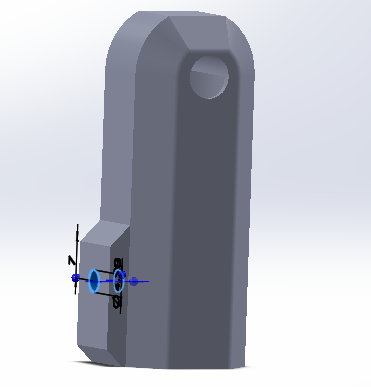


I added some reinforcement on one of the sides then made the hole for the screw that holds the cap in place and another for the string to pass through.
Making the Sliding Handle.
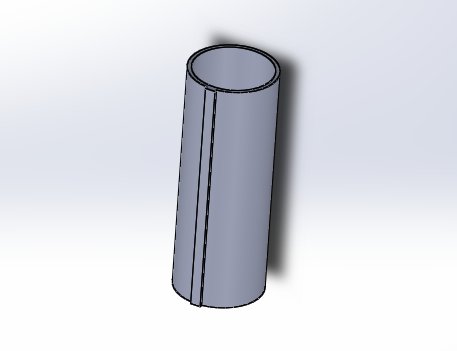

For the sliding handle, I made a hollowed profile extrusion. I then added a fin at the side with a hole in it to tie the end of the string.
Adding a Little Texture.


For a better grip I added a texture to the surface. I made a groove around the handle and then multiplied it down the length using a linear matrix.
Time to Print!

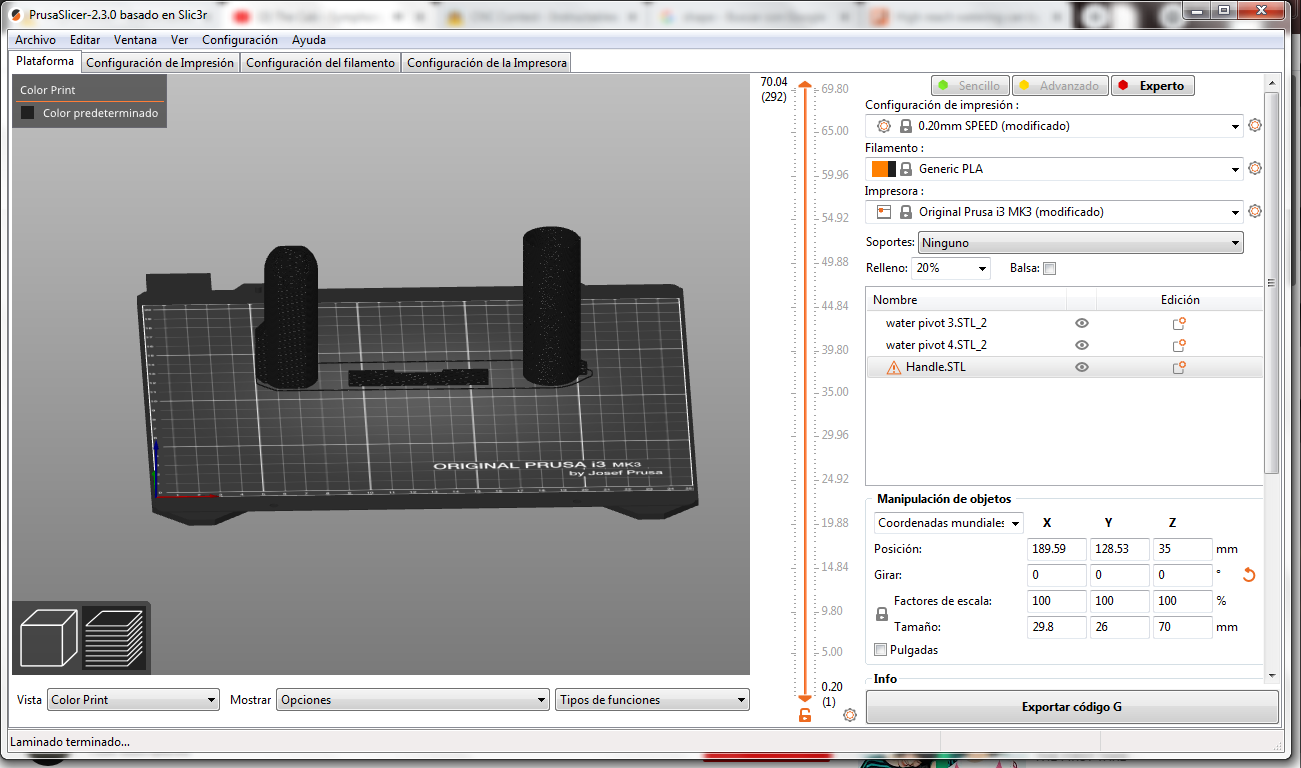
Now we are in business! With the model ready we can start to print the components. If you want to make your own all files are available at https://www.prusaprinters.org/prints/65747-high-re...
Its important to measure the diameter of your broomstick before printing though. The model was made for a stick with a diameter of 22,3 mm, so scale accordingly!
I recommend white PETg for the pitcher and black PETg for the rest. I printed them on 0,2 mm layer resolution. The infill can be 20% or lower for most pieces, but I switched it to 50 % for the axis, as it has to support the weight of the pitcher.
Assembling the Watering Can.
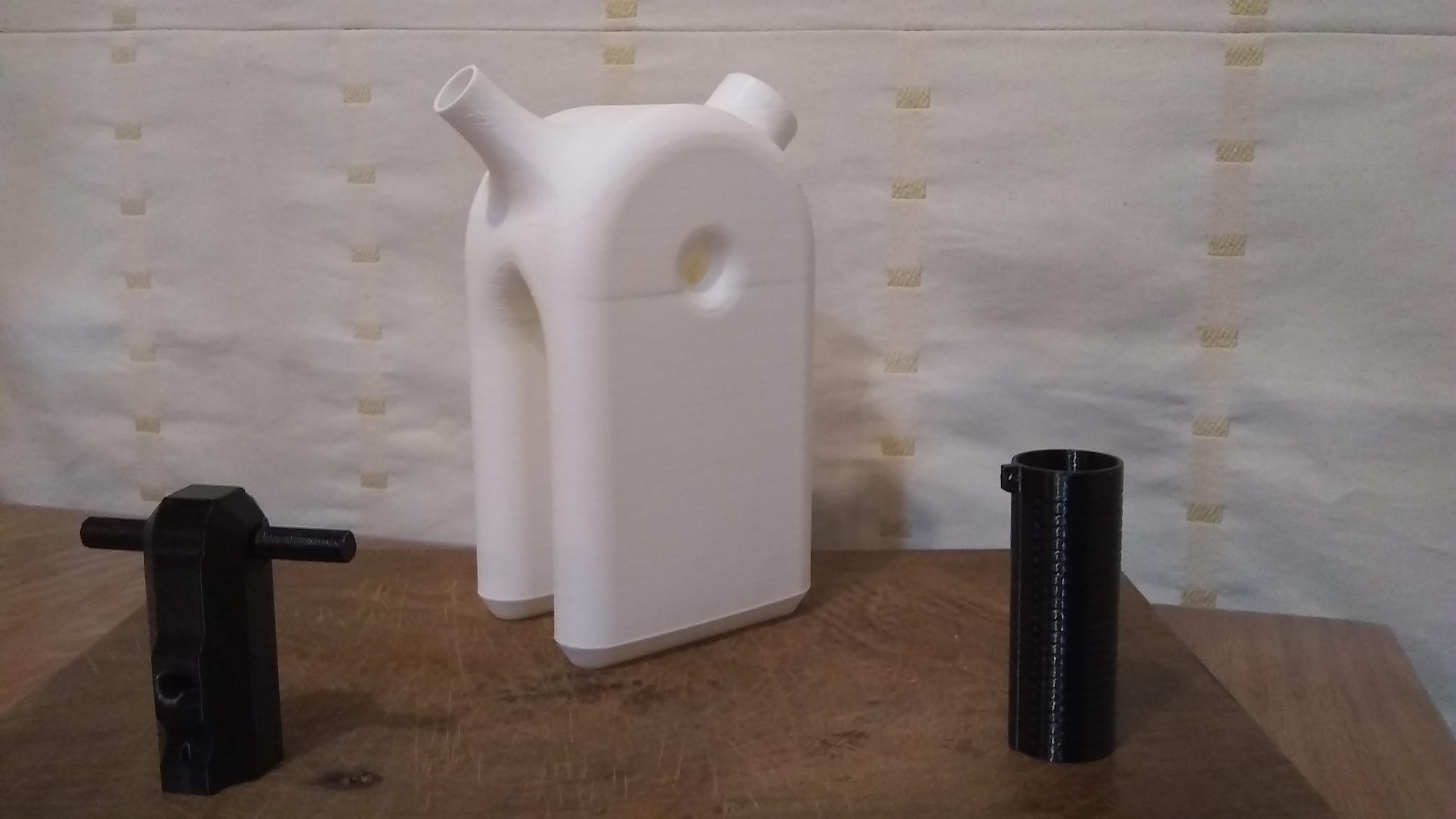


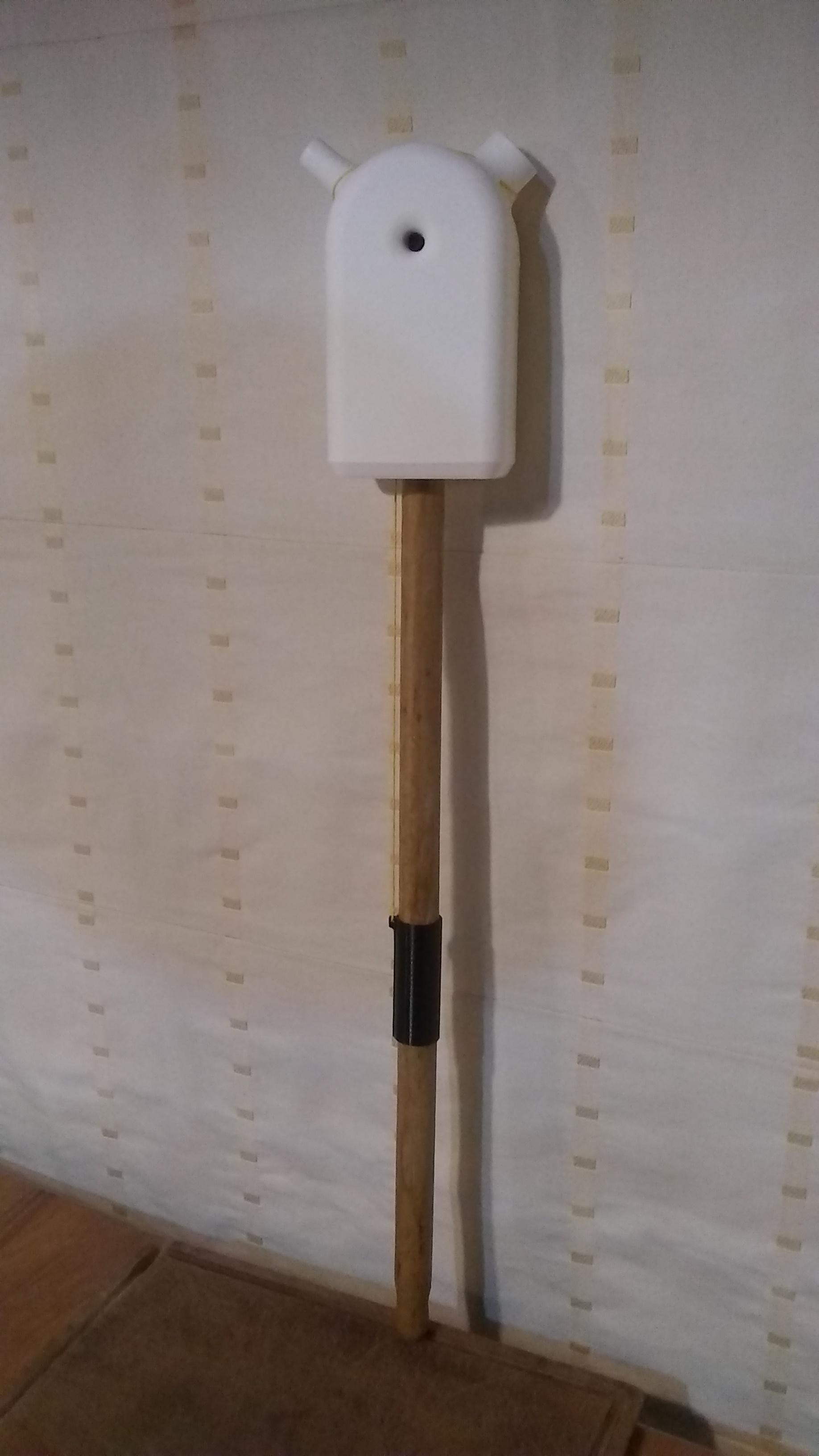

Once all the components are printed you can start the assembly.
First, place the cap on one end of the broomsick without pushing it all the way to the bottom.
Next, place the pitcher into position and thread the axis through both the cap and the pitcher, make sure that the indentation in the axis is pointing down.
Now you can push the broomstick all the way in and secure it with the screw (or some glue). It actually works fine in my case without the screw because the tolerances are tight enough, but that could change when other broomsticks are used.
To finish off, slide in the handle from the bottom of the broomstick and then tie one end of the string to it. For the other one end, you want to loop around both spouts before tying it, passing through the small holes of the second spout (you can use the picture as a guide).
The watering can is now ready to pour!
Water Away!

You can fill up your pitcher now and start watering some thirsty plants! The current model can hold about 575cc of water. If you would like a bigger model just let me know!